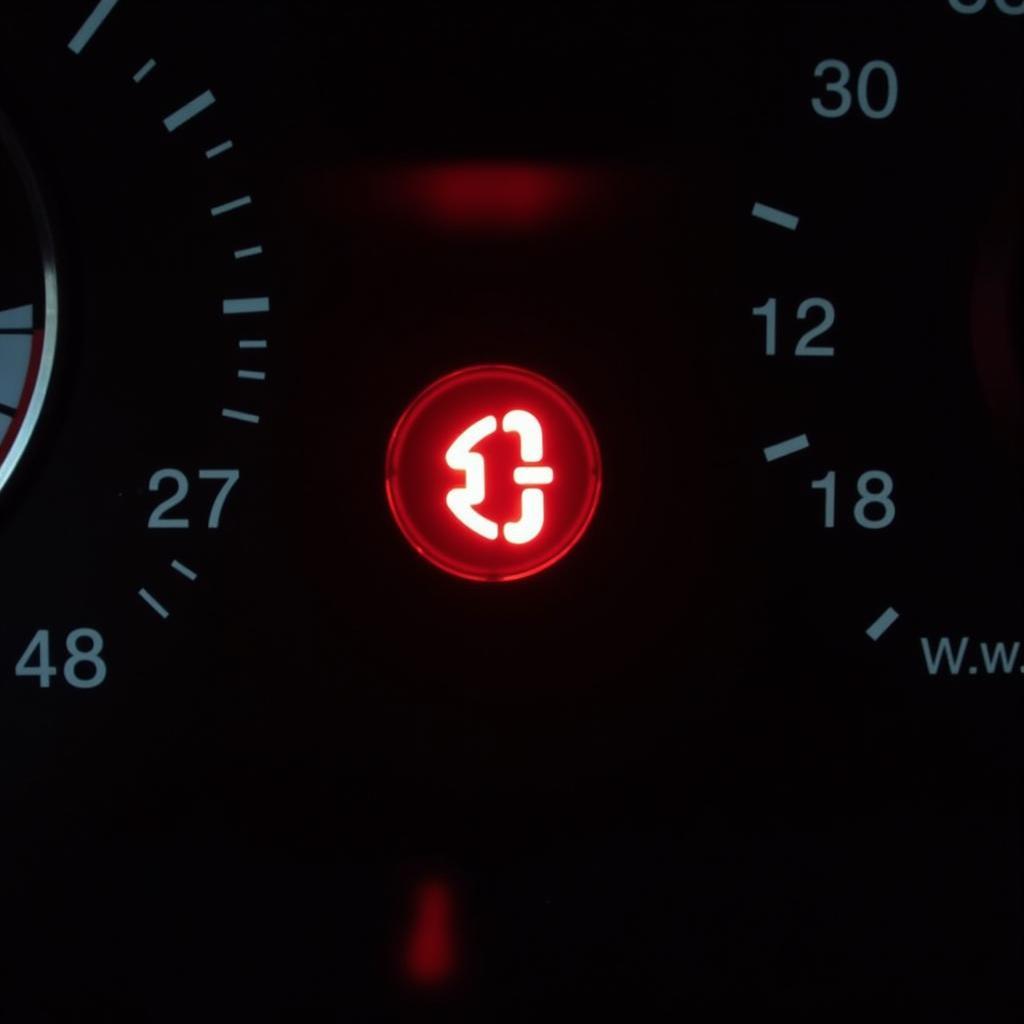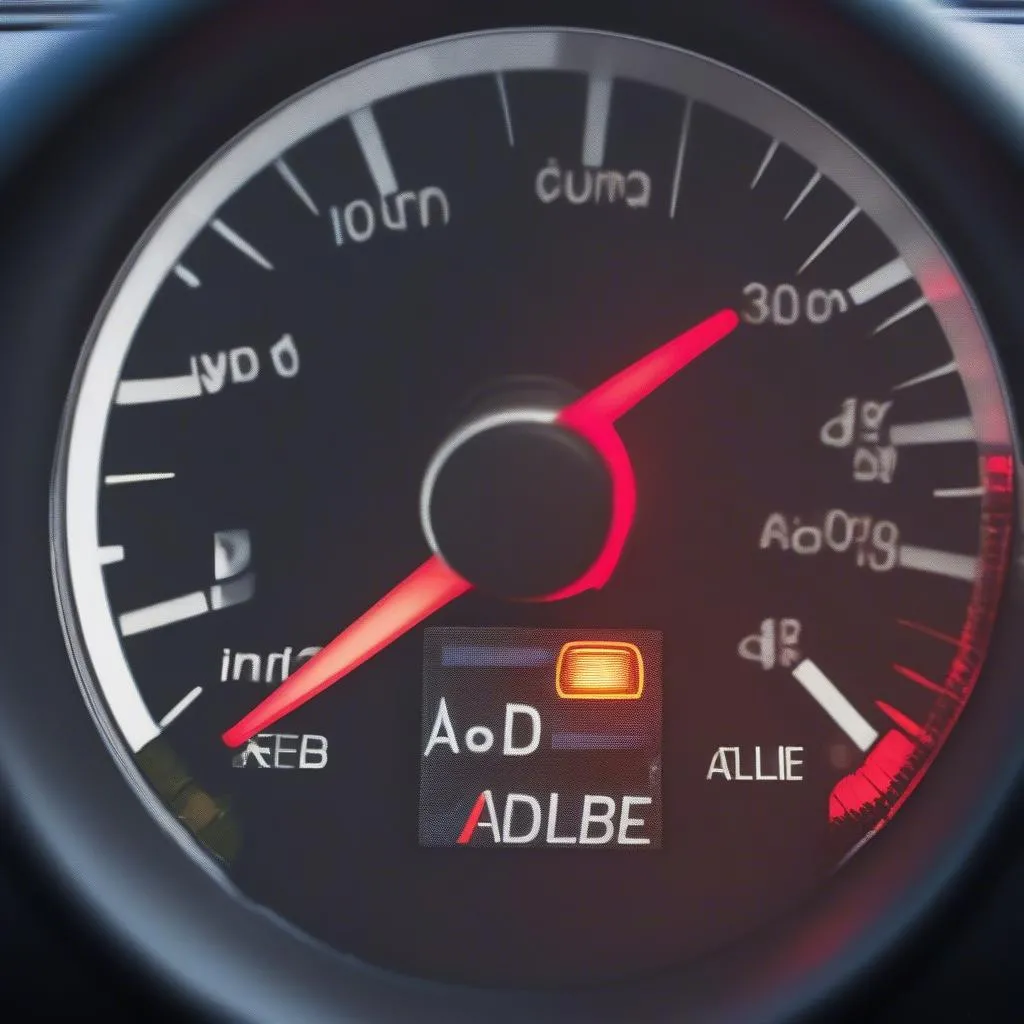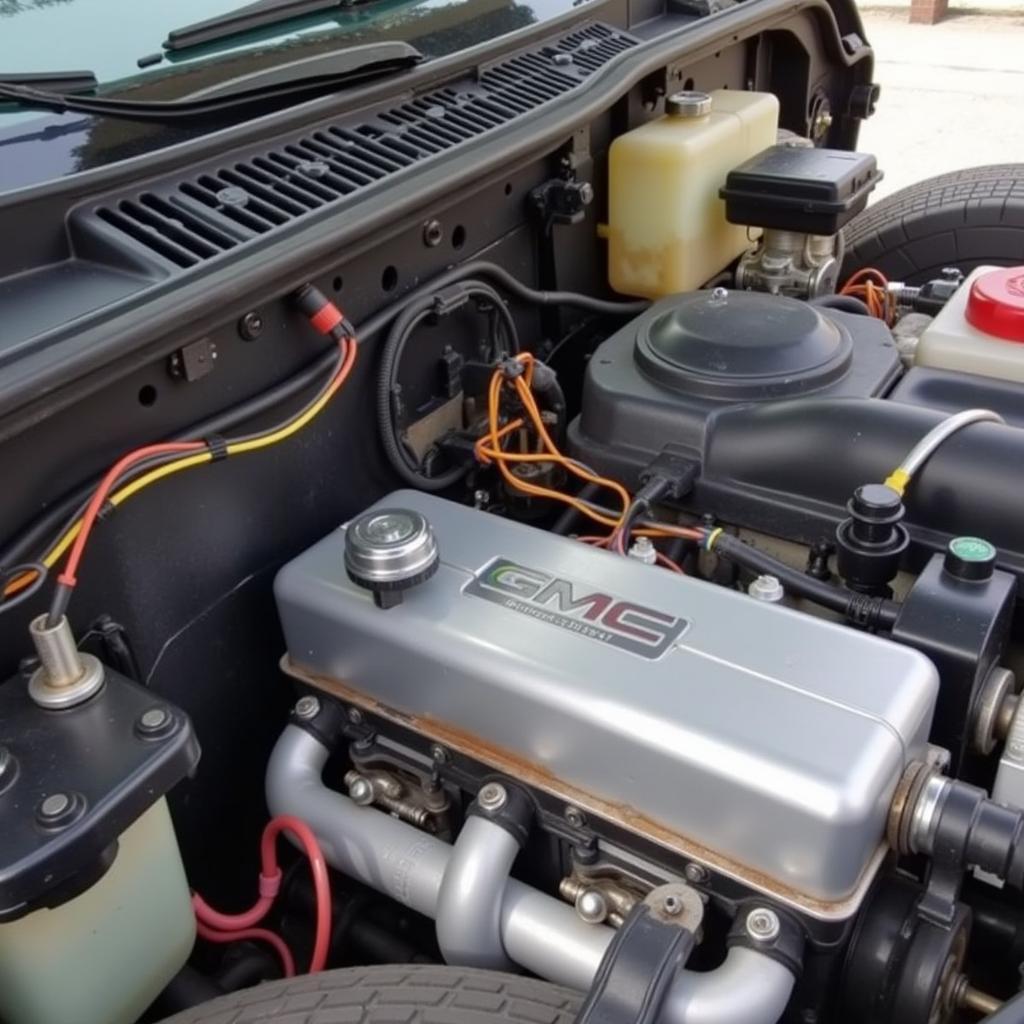A brake system warning light is a crucial indicator of potential problems within your vehicle’s braking system. Ignoring this warning could lead to serious safety risks. This article will guide you through understanding the various reasons behind a brake system warning, how to diagnose the problem, and even explore some remote software solutions that can address certain issues.
See our guide on typical brake system warning light switch locations for more information on where to find these crucial indicators.
Common Causes of a Brake System Warning Light
A glowing brake system warning light can stem from various issues, ranging from simple to complex. Let’s explore some of the most common culprits:
- Low Brake Fluid: This is the most frequent cause. Low brake fluid often indicates a leak somewhere in the system, which requires immediate attention.
- Worn Brake Pads: Brake pads have wear indicators that trigger the warning light when they reach a critical thickness.
- Faulty Brake Sensor: The sensors that monitor brake fluid levels and pad thickness can sometimes malfunction, triggering a false alarm.
- ABS Issues: Problems within the Anti-lock Braking System (ABS) can also illuminate the brake warning light. This could be due to a faulty sensor, pump, or control module.
- Parking Brake Engaged: Sometimes, the simplest explanation is the correct one. A partially engaged parking brake can trigger the warning light.
- Brake Light Problems: In some vehicles, a malfunctioning brake light can also cause the brake system warning light to illuminate.
Diagnosing the Brake System Warning
Accurately diagnosing the cause of the brake system warning is crucial for effective repair. Start by checking the obvious: the parking brake and brake fluid level. If those are normal, move onto more involved checks:
- Visual Inspection: Carefully examine the brake lines, calipers, and rotors for any signs of leaks or damage.
- Brake Pad Inspection: Check the thickness of the brake pads. If they are worn down to the indicators, replacement is necessary.
- Diagnostic Scan Tool: A scan tool can read the error codes stored in the vehicle’s computer, providing valuable insights into the problem’s source. This is especially helpful for ABS issues.
- Professional Inspection: If you are unable to identify the problem, it’s always best to consult a qualified mechanic.
 Brake System Warning Light on Car Dashboard
Brake System Warning Light on Car Dashboard
While many issues require physical repairs, some can be addressed remotely using specialized software.
Remote Software Solutions for Brake System Issues
Modern vehicles rely heavily on software and electronic control units (ECUs). In some cases, brake system problems can arise from software glitches or misconfigurations within these ECUs. Remote software solutions can be a cost-effective and efficient way to address these issues.
- Software Updates and Reprogramming: Remote software updates can address known bugs and improve the performance of brake system components like the ABS module.
- Calibration and Configuration: Sometimes, sensors and actuators within the brake system require recalibration or reconfiguration, which can be done remotely.
“Remote diagnostics and software solutions are transforming the automotive repair industry,” says John Smith, Lead Automotive Diagnostic Technician at Advanced Auto Solutions. “By leveraging these technologies, we can quickly and accurately pinpoint problems and often resolve them without the need for physical intervention.”
You can find more information about brake system warning light issues for specific models, such as the Mazda 6, by checking our dedicated guide.
Preventing Brake System Issues
Regular maintenance is key to preventing brake system problems. Here are some preventative measures you can take:
- Regular Brake Inspections: Have your brakes inspected at least once a year or as recommended by your vehicle’s manufacturer.
- Brake Fluid Flush: Regularly flush your brake fluid to prevent corrosion and maintain optimal performance.
- Careful Driving Habits: Avoid aggressive braking and excessive speeds, which can put extra strain on your brakes.
“Preventative maintenance is always better than reactive repairs,” advises Sarah Jones, Senior Automotive Engineer at BrakeTech Solutions. “Regular checks and timely servicing can save you money and headaches in the long run.”
For specific brake system warning light issues, you can refer to our guides on the 2010 Prius or the 2016 Tahoe trailer brake system warning.
Conclusion
The brake system warning light is an essential safety feature in your vehicle. Understanding its potential causes and taking proactive steps to diagnose and address the problem is crucial for your safety and the longevity of your vehicle. Don’t ignore this warning; address it promptly to avoid potentially serious consequences. Remember, regular maintenance and timely repairs are the best ways to keep your brakes in top condition and ensure safe driving. While some issues may require a mechanic’s expertise, exploring remote software solutions could provide efficient and cost-effective resolutions for certain brake system problems.
FAQs
- What should I do if my brake system warning light comes on? Pull over safely and check your parking brake and brake fluid level. If those are normal, consult a mechanic as soon as possible.
- Can I drive with the brake system warning light on? It’s highly discouraged. Driving with a brake system warning light could be dangerous. Have the issue inspected immediately.
- How much does it cost to fix a brake system problem? The cost varies depending on the cause. A simple brake fluid top-up might cost very little, while more complex repairs could be significantly more expensive.
- How often should I have my brakes inspected? At least once a year or as recommended by your vehicle’s manufacturer.
- Can remote software updates fix all brake system problems? No, remote software solutions are primarily effective for software-related issues within the brake system’s electronic components. Physical damage or wear require traditional repairs.
- What are the symptoms of a failing brake system? Symptoms can include a soft brake pedal, grinding noises, pulling to one side while braking, and of course, the illuminated brake system warning light.
- How can I check my brake fluid level? Locate the brake fluid reservoir under the hood. The reservoir usually has markings indicating the minimum and maximum levels. Check the fluid level and add more if necessary, using the correct type of brake fluid for your vehicle. You can find more information on the Toyota electronic brake system warning light issues in our dedicated article.


